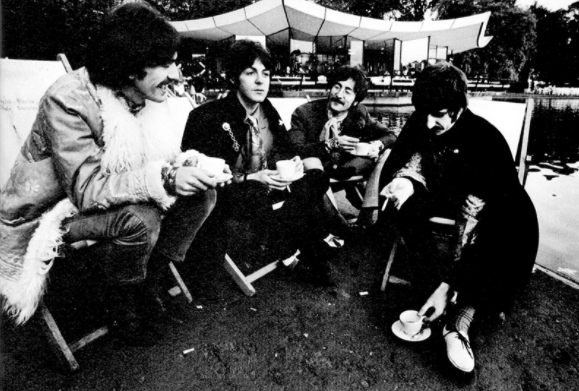As a musician, I found the Voyager Golden Record story to be fascinating. What an incredibly difficult task to choose 27 music pieces out of the millions of songs that have been recorded in history. Even these millions of recordings only represent a small fraction of all the songs created throughout human history.
Carl Sagan states that the objective of the Voyager Golden Record was to choose the songs that best represent humanity. I believe this is an impossible task because the idea of “best” is going to be hugely biased by the cultural background and ideologies of those who select the pieces. Of course, I don’t intend to de-contextualize Sagan’s comment, as he does confess this is a difficult task. However, I think the Voyager Golden Record case is a perfect example of what was stated in this module’s introduction: “what counts as legitimate knowledge is the result of complex power relations and struggles among identifiable class, race, gender, and religious groups” (n.a., n.d.).
With this in mind, I would like to disclose that my curation is highly biased. This is not only due to aesthetic preferences. In some cases, I will use reasoning similar to Sagan’s, who selected some pieces because they represent strong mathematical foundations or philosophical ideas. In my view, these are also biased by ideologies of what is relevant and meaningful content. I actually enjoy how this task exposes the subjectivity of music appreciation and preference, a topic I like to reflect on and always come across while interacting with other musicians.
I think one crucial aspect of doing this task is to think about how the pieces can provide information to the receptors about our human experience. This is the approach I followed when selecting the pieces. Inevitably, I am making some assumptions about the receptors, such as their ability to perceive frequencies through hearing, self-awareness, awareness of a higher universal source, intelligence, and capacity to experience emotions.
Here we go…
(In no particular order of importance)

I’ve selected this piece because rhythm is the most basic form of musical expression. It only deals with localization of sound in time, but it doesn’t have a dimension of tonality (although in this piece some of the drums are tuned) as we would find in melodies in harmonies. The repetitive drum patterns show an understanding of mathematical proportions. This would let the receptors that we are time-beings.
Click here to listen

I’ve selected this piece because of its melodic complexity. This would let the receptors know about our incredible ability to play with organized divisions of space, which in turn also reveals information about the spatial component of our existence and thinking processes.
Click here to listen

I’ve selected this piece because of its vocal component. In my view, the human body is the most complex “gadget” on Earth. With this in mind, the amount of content a human voice (particularly a virtuoso) can transmit is unique and represents the power of our creator.
Click here to listen

I’ve selected this piece because of its spiritual character. In my view, a performance like this is not so focused on the forms of music (and that’s why it is simple) but rather on the silence and the essence from which music (or creations) emerges. This would let the receptors know that we are not just time and space beings, but also spiritual beings. This represents a level of awareness of the formless and timeless being within us – which is probably the same universal being within the receptors
Click here to listen

I’ve selected this piece because of its exuberant and joyful character. This, of course, assumes that the receptors are emotional beings. In my personal view, the purpose of music is to express aliveness, beauty, and joy – to celebrate the fact of existence, which would express an understanding of the value of life.
Click here to listen

I’ve selected this piece because it shows a very important aspect of human life, which is our social nature. The many vocals heard in this piece show our ability to come together as a whole, which reflects an understanding of a level of our existence in which we are not separate and individual.
Click here to listen

I’ve selected this piece because it reflects an outstanding understanding of mathematics. It is very difficult to imagine that the receptors wouldn’t comprehend mathematical foundations – as the universe is built on such principles. I believe this piece would provide a lot of information about our level of intelligence and mental capacity.
Click here to listen

Although all the songs give clues about our technological ability (songs had to be recorded using microphones, for example), this is the only piece that has an electric instrument. This could show the receptors that we also use electrical technology for creative purposes, revealing again our expressive nature.
Click here to listen

I’ve selected this piece because it reveals the dark side of the human mind and soul. This piece evokes fear and I believe it would be important for the receptors to understand our vulnerability and existential struggle. I think it’s probable that the receptors could be beings that have transcended time and space (hence fear) and know what to expect from our behavior under certain circumstances.
Click here to listen

I’ve selected this piece because of its very fractal nature. It consists of a simple phrase that gets modified and elaborated in numerous ways. In my view, this reveals an understanding of how creation unfolds from simple patterns into complex ones.
Click here to listen












